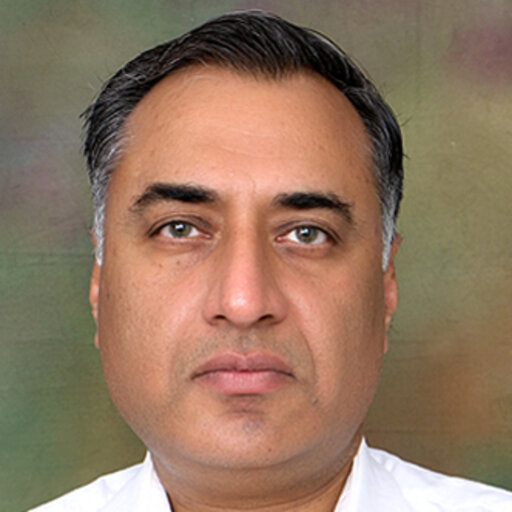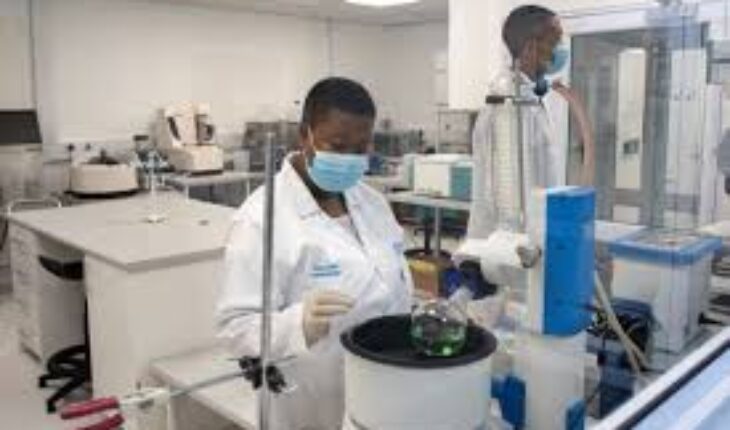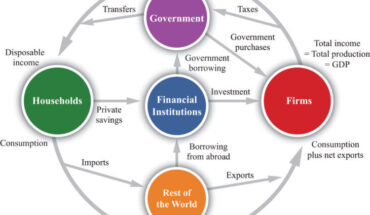
Dr. Anil Kumar Angrish

Vanshika Goyal
Biopharmaceuticals especially Biologics have shown immense promise in treating conditions which were previously challenging to address with conventional drugs. Biologics have revolutionized the treatment of various cancers, autoimmune disorders, and genetic diseases. Certain biopharmaceuticals have become integral components of modern medical treatment as these have been included in the World Health Organization (WHO) Model List of Essential Medicine. But due to high cost of biopharmaceuticals especially biologics, access to therapies remains limited in Low-Middle Income Countries (LMICs). High cost of biologics can be observed from the fact that Tagrisso (Active Pharmaceutical Ingredient: Osimertinib) that is used for treatment of Non-small cell lung cancer (NSCLC) is priced at Rs. 1,51,670 for 10 tablets strip, Stelara (API: Ustekinumab) used in the treatment of Crohn’s disease is priced at Rs. 1,11,218 for 1 vial of 90 mg (single dose injection), Kisqali (API: Ribociclib) used in the treatment of breast cancer is priced at Rs. 15,000 for 3 tablets strip, and Keytruda (API: Pembrolizumab) used in the treatment of cancer is priced at Rs. 1,97,250 for a vial of 4 ml.
There are 54 economies which fall in the category of LMICs, and India is the largest lower-middle income country. LMICs have the highest burden of diseases, and still these countries have limited access to biopharmaceuticals. World Bank institutions classify countries on the basis of income as “low-income economies”, i.e., economy with a GNI per capital of $1,135 or less in 2022, calculated using the World Bank Atlas method, “lower-middle income economies”, i.e., economy with a GNI per capita between $1,136 and $4,465), “upper middle-income economies”, i.e., economy with a GNI per capita between $4,466 and $13,845 and “high income economies”, i.e., an economy with a GNI per capita of $13,846 or more.
Table 1:- Region-wise Low-Middle Income Countries (LMICs)
| Region (Number of Economies) | LMICs |
| Sub-Saharan Africa (19) | Angola, Benin, Ivory Coast, Cameroon, Congo, Comoros, Cabo Verde, Ghana, Guinea, Kenya, Lesotho, Mauritania, Nigeria, Senegal, Sao Tome and Principe, Eswatini (formerly Swaziland), Tanzania, Zambia, and Zimbabwe |
| East-Asia and Pacific (13) | Micronesia, Fed. Sts., Cambodia, Kiribati, Lao PDR, Myanmar, Mongolia, Philippines, Papua New Guinea, Solomon Islands, Timor Leste, Vietnam, Vanuatu, and Samoa |
| Middle East & North Africa (8) | Djibouti, Algeria, Egypt, Iran, Jordan, Lebanon, Morocco, and Tunisia |
| South Asia (6) | Bangladesh, Bhutan, India, Sri Lanka, Nepal and Pakistan |
| Europe & Central Asia (4) | Kyrgyz Republic, Tajikistan, Ukraine, and Uzbekistan |
| Latin America & Caribbean (4) | Bolivia, Honduras, Haiti, and Nicaragua |
Source: Compiled from the World Bank website
Multiple studies have highlighted the challenges surrounding the ‘accessibility’ and ‘affordability’ of different biologics in LMICs, e.g., immuno-oncology (IO) drugs. In November 2023, the high cost of Zolgensma, one-time gene therapy that is used in treatment of Spinal Muscular Atrophy (SMA) in children became a headline in newspapers across India. Highly expensive drug developed by Novartis, a Swiss company, had a cost of Rs. 17 crore for a single dose which was being sought for a 15-month old boy. Underlying reasons behind high price were cited as high cost of drug development, import cost, taxes, among others. Even in developed economies, affordability is an issue for such drugs, e.g., in the USA alone, there were 10,000 to 25,000 children and adults living with SMA in 2023. The company claimed that it provided about 300 children in 36 countries with the gene therapy free of charge.
Proposed solutions to deal with the situation include increasing resources for healthcare, stimulation of research on cost-effectiveness, modifications in patent laws for biosimilars and generics, intellectual property licensing, collective procurement efforts, leveraging pharmacologic knowledge to optimize dosing regimens potentially reducing costs and improve access to treatment, harmonization of regulatory pathways, collaborations between innovator companies and leading generic players, public-private partnerships, innovative financing models, among others. This is being done to address ‘barriers to access’ and to ensure equitable treatment for patients suffering from those diseases which can be treated with the use of biopharmaceuticals.
Biopharmaceutical availability may itself become a concern due to lack of a reliable and sustainable supply chain. Most recently, in the first week of June 2024, South Korea, India, the United States, Japan, and the European Union (EU) came together to launch ‘Biopharmaceutical Alliance’ as a response to the ‘drug supply shortages’ experienced during the Covid-19 pandemic. Participants in the Bio International Convention 2024 held in San Diego emphasized on the importance of a ‘reliance and sustainable’ supply chain, and agreed to coordinate the respective countries’ bio policies, regulations, and research and development support measures. It was acknowledged during the Convention that the ‘production of essential raw materials and ingredients’ is concentrated in a few countries. Therefore, they agreed to work together to build a detailed pharmaceutical supply chain map.
To make biopharmaceuticals especially biologics accessible, leading biopharmaceutical companies have also started recognizing the need for their contribution. Their moves include ‘plans to forgo patent protection on products in LMICs’, ‘grant licenses to generic manufacturers’, ‘launch of programmes which offer treatments for chronic diseases in LMICs at a minimal costs’, ‘offering discounted chronic treatments’, among others. Leading biopharmaceutical companies understand that LMICs hold immense potential in terms of patient population, increasing investment in healthcare spending in these economies, higher possibility of integrating new biopharmaceutical interventions under existing healthcare structures & ongoing healthcare programmes, and possibility of developing innovative delivery mechanisms by prioritizing affordability.
Top innovator biopharma companies globally have strength and resources to contribute in this endeavour. Therapeutic segments provide insights on high cost biologics and companies dominating in that segment. Oncology is the segment in which top 13 biopharmaceutical companies globally namely AbbVie, AstraZeneca, Bristol Myers Squibb, Eli Lilly, Gilead Sciences, Johnson & Johnson, Novartis, Roche, Takeda Pharma, Amgen, Pfizer, Sanofi, and Merck & Co., have presence. In Neuroscience as well as Immunology segment, 11 out of these 13 biopharmaceutical companies have presence. In contrast to this, there are segments where only one company is present out of these top 13 biopharmaceutical companies, e.g., Pfizer in Internal Medicine, and Novartis in Dermatology. AbbVie is only company that has presence in Aesthetics, Eye Care and Women’s Health. Top selling products of these biopharmaceutical companies clearly show their strength, e.g., Humira from AbbVie, Tagrisso from AstraZeneca, Trulicity from Eli Lilly, Biktarvy from Gilead Sciences, Stelara from J&J, Kisqali from Novartis, Keytruda from MSD to name a few. These companies consider ‘regulatory environment’, ‘intellectual property protection’, ‘price controls’, and ‘reimbursement constraints’ as major barriers in LMICs for launch of biologics.
Some of these companies have reported about their programs to make biopharmaceuticals accessible such as Access to Care by AbbVie Inc., Healthy Heart Africa by AstraZeneca, Life for a Child Program by Eli Lilly, Max Access Solution by BMS, Novartis, Takeda and Pfizer, ALIVE by Roche, and Blincyto Humanitarian Access Program by Amgen. Certain biopharmaceutical companies have made interventions through pricing, e.g., Tiered Pricing by Johnson & Johnson, and Differential Pricing by Roche. Differential pricing essentially involves ‘charging different prices for the same product’ based on certain criteria that may be buyer’s ability to pay, market segment, or simply geographic location. Through differential pricing, biopharmaceutical companies make medications more affordable in lower-income regions whereas these companies maintain profitability in higher-income areas. Roche is said to have applied ‘four-tiered pricing’ too. Four-tiered pricing is also a specific type of ‘differential pricing’ only. But in this case, a biopharmaceutical product is offered at four different price levels based on predefined criteria. And predefined criteria may include a country’s income levels, disease burden or healthcare infrastructure. In this way, pricing strategies by 3 out of 13 top biopharmaceutical companies have been designed to align with the economic realities of different regions, thereby enhancing access to biopharmaceuticals.
Top biopharmaceutical companies need to report their initiatives targeted at making biologics accessible. For this, there need to be better reporting on number of persons who have been supported, total amount of support, total amount of support as a percentage of total number of persons affected in a given region, total donations as a percentage of total revenue from that product, to name a few.
Dr. Anil Kumar Angrish,Associate Professor (Finance and Accounting), Department of Pharmaceutical Management, NIPER, SAS Nagar (Mohali), Punjab
Vanshika Goyal, MBA (Pham.), Department of Pharmaceutical Management, NIPER, SAS Nagar (Mohali), Punjab
Disclaimer: Views are personal and do not represent the views of the Institute.






